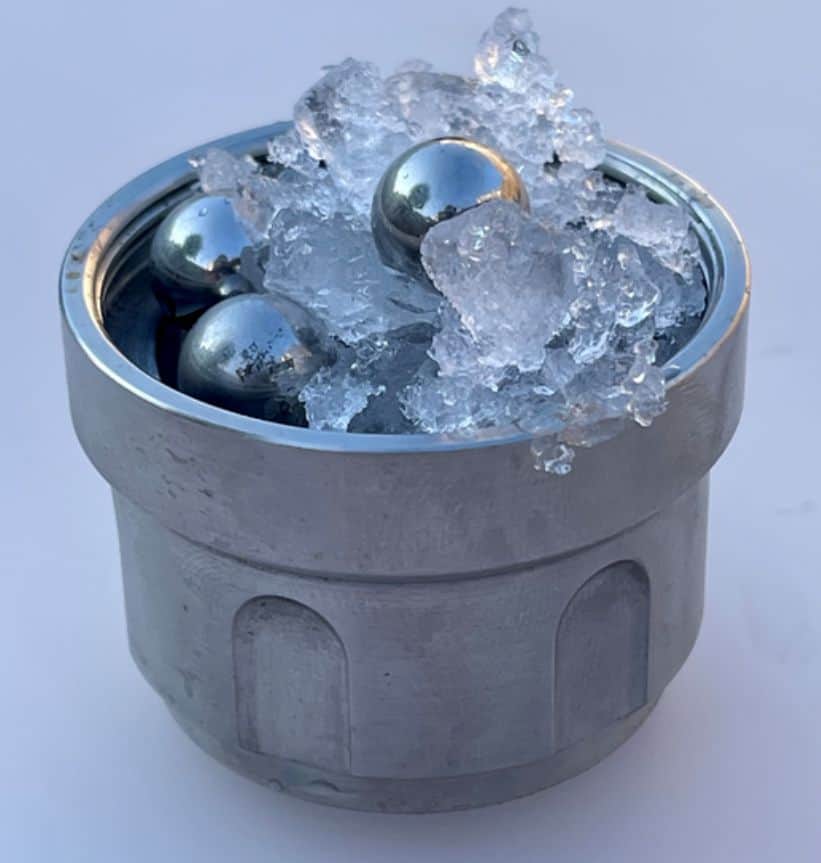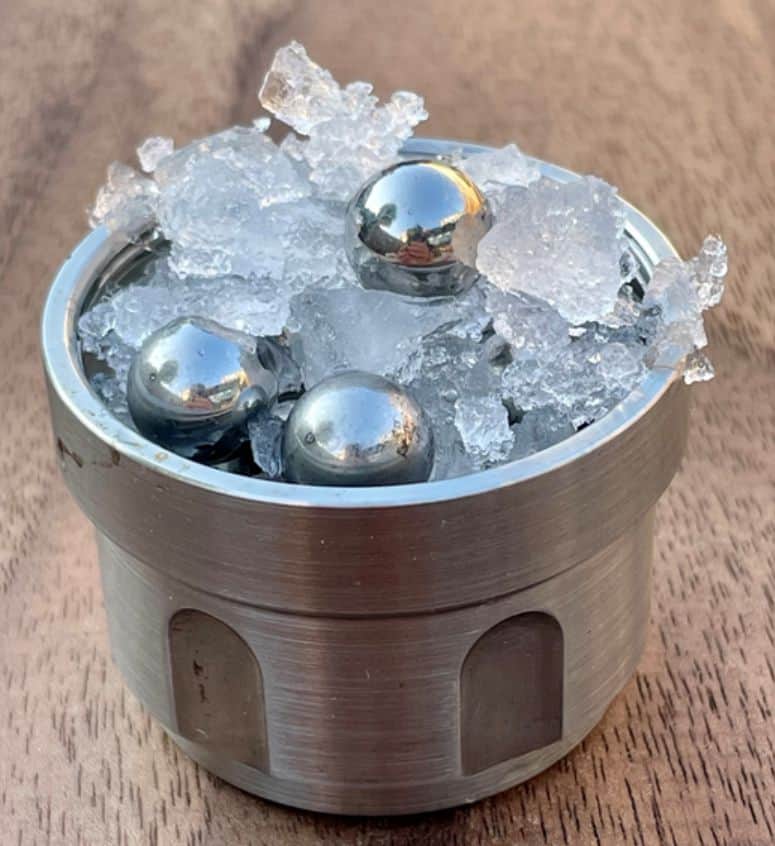Researchers from the University College London (UCL) and the University of Cambridge (Cambridge) have found a new kind of ice that matches liquid water more closely than any other known ice, which may rewrite our knowledge of water and its numerous oddities.
The recently found ice is amorphous, meaning that its molecules are not arranged in a crystal structure as they are in regular ice. Even though it is rare on Earth, amorphous ice is the most common type of ice in space. This is because ice doesn’t have enough heat energy to form crystals in space, where it is colder.
The research team employed a technique called ball milling, aggressively churning common ice and steel balls in a jar frozen to -200 degrees Celsius, for the study, which was reported in the journal Science.
They discovered that the procedure produced a unique amorphous type of ice, unlike all other known ices, which had the same density as liquid water and whose condition resembled water in solid form, rather than microscopic chunks of typical ice. Their novel ice was given the name medium-density amorphous ice (MDA).
Since the tidal pressures from gas giants like Jupiter and Saturn may impose comparable shear stresses on ordinary ice as those caused by ball milling, the researchers hypothesized that MDA (which appears as a fine white powder) may exist within ice moons of the outer solar system. The scientists also discovered that MDA produced an astonishing amount of heat when it warmed up and re-crystallized, suggesting that it may cause tectonic movements and “icequakes” in the kilometers-thick layer of ice that covers moons like Ganymede.
“Water is the foundation of all life. Our existence depends on it, we launch space missions searching for it, yet from a scientific point of view it is poorly understood,” says explains senior author prof. Christoph Salzmann.
“We know of 20 crystalline forms of ice, but only two main types of amorphous ice have previously been discovered, known as high-density and low-density amorphous ices. There is a huge density gap between them and the accepted wisdom has been that no ice exists within that density gap. Our study shows that the density of MDA is precisely within this density gap and this finding may have far-reaching consequences for our understanding of liquid water and its many anomalies.”
Scientists believe that water actually exists as two liquids at extremely low temperatures and that theoretically, at a certain temperature, both of these liquids could coexist, with one type floating above the other, as when mixing oil and water. This theory is supported by the density gap between the known amorphous ices. This theory has been proved by simulation but not verified by experiment. Researchers claim their new findings might cast doubt on this theory.
“Existing models of water should be re-tested. They need to be able to explain the existence of medium-density amorphous ice. This could be the starting point for finally explaining liquid water,” adds Prof. Salzmann.
According to the researchers, the recently found ice might be a solid representation of liquid water that is really glassy, similar to how the glass in windows is a solid representation of liquid silicon dioxide. Another possibility is that MDA is extensively sheared crystalline rather than glassy at all.
“We have shown it is possible to create what looks like a stop-motion kind of water,” remarks co-author Professor Andrea Sella. “This is an unexpected and quite amazing finding.”

“We shook the ice like crazy for a long time and destroyed the crystal structure. Rather than ending up with smaller pieces of ice,” adds lead author Dr Alexander Rosu-Finsen, “we realised that we had come up with an entirely new kind of thing, with some remarkable properties.”

The team also made a computer model of MDA by repeatedly shearing crystalline ice in a way that mimicked the ball-milling process. As a PhD candidate in the ICE (interfaces, catalytic & environmental) lab at UCL and the University of Cambridge, Dr. Michael Davies performed computational modeling. He said: “Our discovery of MDA raises many questions on the nature of liquid water and so understanding MDA’s precise atomic structure is very important.”
Many strange things about water have puzzled scientists for a long time. For instance, water gets less dense as it freezes and is most dense at 4 degrees Celsius (hence ice floats). In addition, unlike most other materials, liquid water becomes less difficult to compress as more of it is squeezed.
In the 1930s, scientists found amorphous ice in its low-density form. They did this by condensing water vapor on a metal surface that had been cooled to -110 degrees Centigrade. In the 1980s, scientists found this high-density state by compressing regular ice to roughly -200 degrees Celsius. In space, amorphous ice is widespread, but on Earth it is only considered to exist in the coldest parts of the atmosphere.
Ball milling is a method used in many fields to grind or mix materials, but it had never been used on ice before. In the research, a grinding jar was cooled to -200 degrees Celsius using liquid nitrogen, and the density of the ball-milled ice was calculated from its buoyancy in the liquid nitrogen. The researchers also used small-angle diffraction at the UCL Centre for Nature Inspired Engineering to investigate the long-range structure of MDA, X-ray diffraction at UCL Chemistry to examine the pattern of X-rays reflected off the ice, and Raman spectroscopy at UCL Chemistry to examine how the ice scatters light. Using the UCL Kathleen High-Performance Computing Facility, they were able to effectively simulate the formation of medium-density ice.
They also looked at the heat produced when the medium-density ice recrystallized at higher temperatures using calorimetry. They found that if they compressed the MDA and then heated it up, it released a surprising amount of energy as it re-crystallized. This shows that H2O can be a high-energy geophysical material that may drive tectonic movements in the ice moons of the solar system.
Source: 10.1126/science.abq2105
Image Credit: Getty
